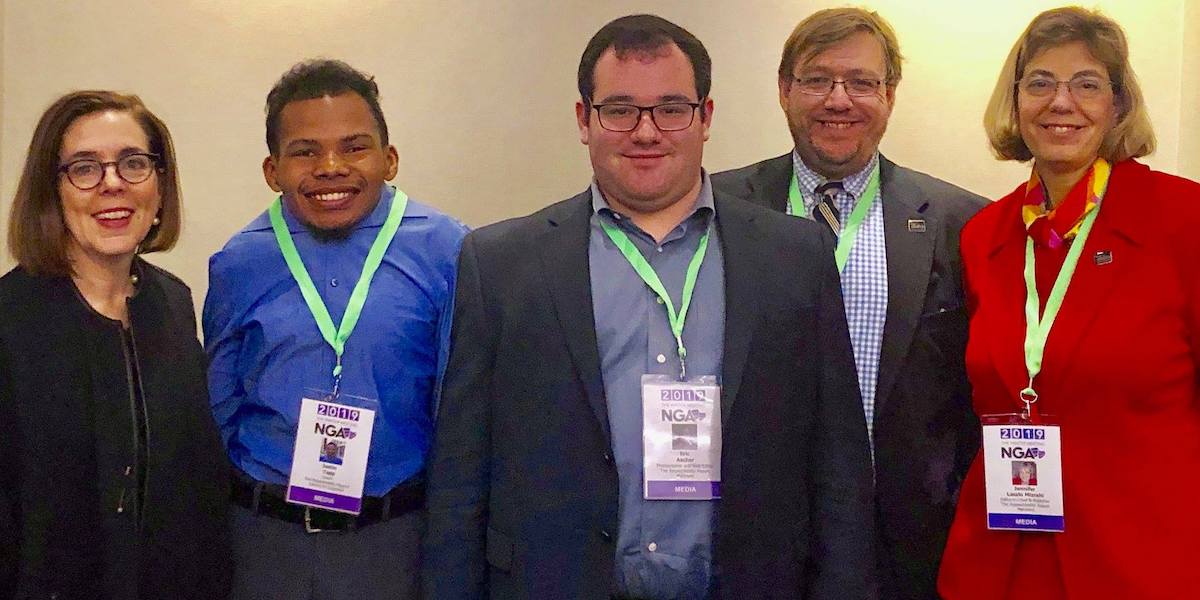
Washington, D.C., March 28 – While nationally 111,804 jobs were gained by people with disabilities, 9,887 people with disabilities left Oregon’s workforce last year. Oregon now ranks 26th in the nation in terms of the state’s employment for people with disabilities. Out of the 288,493 working-age (18-64) Oregon residents disclosed living with a disability, only 109,027 have jobs. The newly published 2018 Annual Disability Statistics Compendium shows that Oregon has a 37.8 percent disability employment rate.
Further analysis by the nonpartisan advocacy group RespectAbility shows that Oregon has dropped from 19th in the nation for employees with disabilities to 26th as other states have outperformed the Beaver State during the same time. Said Jennifer Laszlo Mizrahi, president of RespectAbility, “It is exceptionally bad news that as things have improved nationally for people with disabilities, that Oregon has taken such a big step backwards. People with disabilities want jobs, just like anyone else.” Mizrahi recently met with Oregon Governor Kate Brown to discuss these issues.
Elected for a new four-year term, Gov. Kate Brown says she is deeply committed to improving outcomes for her constituents with disabilities.“Workplaces welcoming talents of all people, including people with disabilities, are a critical part of our efforts to build an inclusive community and strong economy,” Gov. Brown wrote in a proclamation celebrating Disability Employment Awareness Month last October. “In the spirit of the Americans with Disabilities Act (ADA), Workforce Innovation and Opportunities Act (WIOA), Individuals with Disabilities Education Act (IDEA) and Oregon’s Employment First initiative, we can improve and expand access to education and opportunities for people with disabilities to integrate into the workplace.”
Brown adds, “By working together to open doors of opportunity for all Oregon residents, including for those with disabilities, we can help fulfill the promise of our great State.”
Many of the essential building blocks are in place for great success among job seekers with disabilities. In January 2018, new rules were announced to advance the state’s Employment First policies putting the highest priority on employment opportunities for youth with disabilities. Likewise, Project SEARCH, a nationally transformative school to work transition program for youth with disabilities, has been expanded across Oregon with a new effort at the Portland Water Bureau. At SEARCH sites in Eugene, Clackamas and Hillsboro, young people with disabilities have the chance to explore careers in the expanding healthcare industry.
“Our nation was founded on the principle that anyone who works hard should be able to get ahead in life,” said Hon. Steve Bartlett, current Chairman of RespectAbility, who co-authored the Americans with Disabilities Act when he was in Congress. “People with disabilities deserve the opportunity to earn an income and achieve independence.”
A National Issue
Beyond Oregon, how is the workforce changing for people with disabilities? What is driving these changes? The answer is simple. According to Vincenzo Piscopo of the Coca-Cola Company: “People with disabilities bring a unique skill set that it is very valuable for companies.” He went on to add, “As it relates to employment and competitiveness in the workplace, we have to stop thinking of disability as a liability and start thinking of it as an asset.”
Brand-name companies such as JP Morgan Chase, Coca-Cola, Ernst & Young, IBM, Walgreen’s, Starbucks, CVS and Microsoft show people with disabilities are successful employees. These companies also know that these workers improve the bottom line. “People with disabilities bring unique characteristics and talents to the workplace,” said RespectAbility President Jennifer Laszlo Mizrahi. “Hiring people with disabilities is a win-win-win for employers, people with disabilities and consumers alike.”
As more companies hire employees with disabilities, conversations are shifting to focus on inclusion. “Disability inclusion is no longer about automatic doors, curb cuts, ramps, and legislation,” says Jim Sinocchi, Head of the Office of Disability Inclusion at JP Morgan Chase. “Today, the new era of disability inclusion is about “assimilation” – hiring professionals with disabilities into the robust culture of the firm.”
According to the Census Bureau, there are more than 56 million Americans living with a disability. Disabilities include visible conditions such as spinal cord injuries, visual impairments or hearing loss and invisible disabilities such as learning disabilities, mental health or Autism.
An Election Issue
Voter research, conducted by RespectAbility, shows how disability issues connect to all aspects of American life. “Fully three-quarters of likely voters either have a disability themselves or have a family member or a close friend with disabilities,” said former Representative and Dallas Mayor Steve Bartlett. “People with disabilities are politically active swing voters, and candidates should take note of the important issues they care about.”
As 2019 moves into 2020 and the political campaign season heats up, continuing job growth for people with disabilities will be a crucial indicator of the health of the American economy.

Be First to Comment